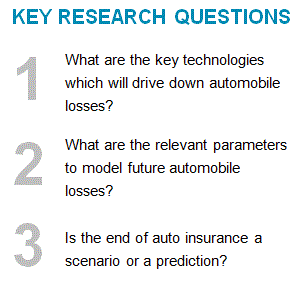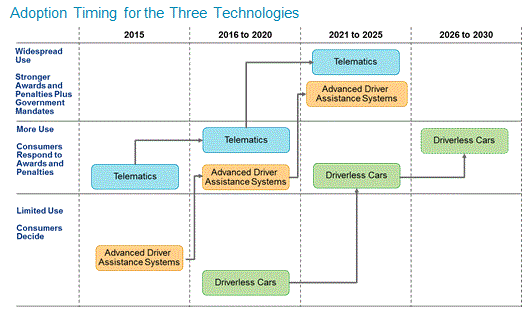The End of Auto Insurance: A Scenario or a Prediction?
Abstract
 |
Four years ago a Celent report asked a question, “What happens when there are (almost) no auto accidents?” To answer that question, this earlier report described A Scenario: The End of Auto Insurance. This current report takes advantage of developments during the past four years to looks at three key technologies: Telematics, Advanced Driver Assistance Systems (aka collision avoidance systems), and Driverless Cars. The report examines the incidence and the effectiveness of each technology over the next 15 years — with some surprising findings. Based on these variables Celent projects the impact on losses and premiums. |
Using these three technologies, this report creates a model of auto insurance losses from 2016 to 2030. The model makes four sets of projections for each year in the 2015 to 2030 period for incidence and effectiveness in reducing losses for:
- Telematics only.
- Multiple ADAS (a vehicle having more than one ADAS capability) only.
- Both telematics and multiple ADAS.
- Driverless technology.
“Two of the parameters in this report’s model are already in common use today: telematics and ADAS,” commented Donald Light, Director in Celent’s North America Property/Casualty Practice and author of the report. “The technology of the third parameter, for driverless cars, is still in a R&D phase. However, with nearly every manufacturer (and Google) pouring substantial sums into making such vehicles generally available within a few years, driverless cars certainly deserve a place in the model.”


